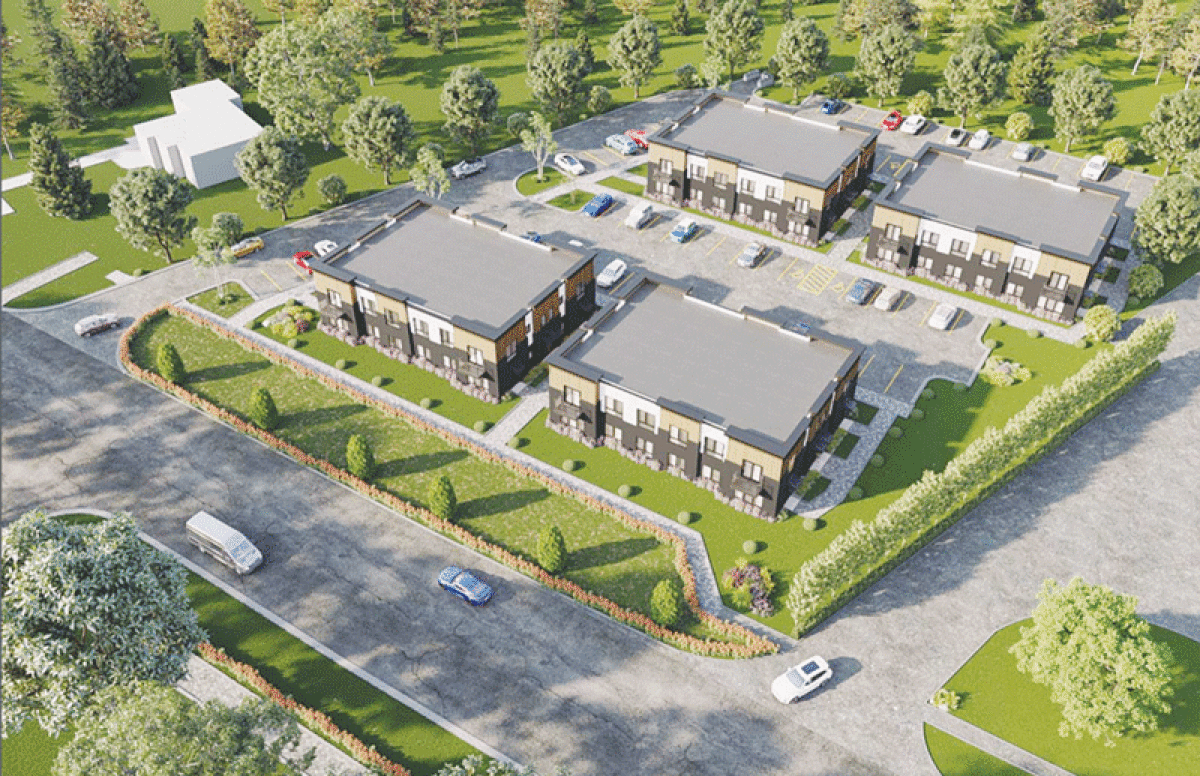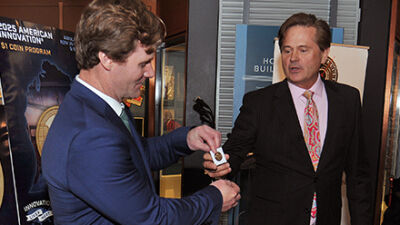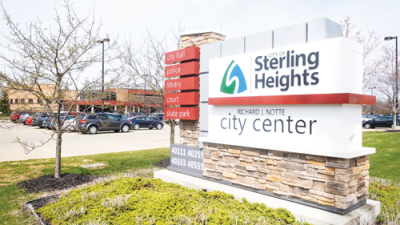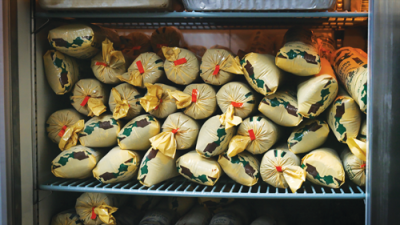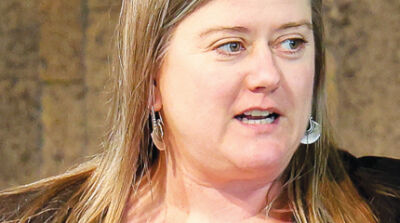STERLING HEIGHTS — Another planned unit development proposal for an apartment complex was recently approved by the Sterling Heights City Council — this time for the north part of the city.
During the Feb. 7 meeting, the council voted unanimously to approve the PUD application for The Flats, a complex of four two-story apartment buildings with a total of 32 units. The approximately 2-acre site is located at 43451 and 43503 Utica Road, on the road’s west side, south of 19 1/2 Mile Road.
The property has been zoned technical research office district, though officials said the city’s master land use plan calls for mixed uses in that area. While The Flats doesn’t incorporate the commercial aspect that mixed-use developments normally have, city officials said its proximity to commercial properties makes it “mixed use in the macro sense,” as described in city documents.
The Flats’ developer, Ben Meldrum, said he has been working on the project for around a year, and he said his vision aligns with the city’s master plan.
“People have kind of asked us, ‘Well, why aren’t you going more dense, more mixed use?’” he said. “I’m receptive to that. I think that we just need to bring a great product to the area to kind of stimulate growth.”
Mayor Michael Taylor called it a great and unique project.
“I think this is going to be a great piece for this,” he said. “North Van Dyke is something I’ve been really focused on for a number of years, and I’m excited about the opportunity to have you guys come in.”
According to Assistant City Planner Jake Parcell, the council’s vote approves the PUD agreement and the conceptual plan, though it doesn’t equate to approving the final site plan. Staff will review the final site plan at the end of the PUD process, he added.
Strategic planning and PUDs
The Flats is just the latest apartment complex to gain council approval via the PUD process, and city officials shared their thoughts about the PUD process at a Jan. 23 strategic planning session.
City Manager Mark Vanderpool said the PUD option is helpful when it comes to flexibly finding uses for the “few remaining parcels” that are vacant in a built-out community.
“At the same time, these properties can be a bit controversial,” he added.
City Attorney Marc Kaszubski said the Michigan Zoning Enabling Act allows the PUD process to take place. He said the PUD’s purpose is to make zoning and development more flexible, innovative and efficient in terms of land use.
The PUD process gives the council the latitude to “decrease, waive or modify” restrictions on density, setbacks, building height, parking, landscaping and more, he added.
He said a PUD can operate in any district, though it “must match the physical character of the city and the surrounding areas and must preserve as much natural vegetation and terrain as possible.”
He gave several examples of PUD developments over the past few years, including the Chaldean Community Foundation Van Dyke apartments, The Verandas and the proposed redevelopment of the Lakeside Mall area.
Kaszubski said the city may opt to change how it handles PUDs by choosing certain preferred sites or zones for them. Also, the city could create more prerequisites to eligibility, including more stringent guidelines on what constitutes a substantial public benefit, he explained.
“While enhancements can be made, a proper balance must be considered so as not to create too many hurdles that it serves to discourage instead of encourage innovation and future development,” Kaszubski said.
During public comment, resident Ken Nelson criticized the PUD process and recalled how, in 2022, the public opposed a multistory mixed-use proposal along Hall Road called The Wedge of Sterling Heights, which had planned to abut a neighborhood. That proposal was withdrawn by its developer.
Nelson also criticized the power that the PUD process gives the council.
“I know it’s in the Zoning Enabling Act, but it gives seven people out of this city that we elected complete responsibility over our — to change our — zoning regulations,” he said.
When it was time for the council to discuss the issue, Mayor Pro Tem Liz Sierawski called the PUD ordinance “unwieldy at times” and said she would like reforms. She explained that she doesn’t like how the city has to grant “quite a few variances” when proposals come before the council.
Mayor Michael Taylor said the topic is timely and discussion is necessary. He explained that 2022 was likely one of the heaviest, in terms of development and planning in the city’s history, citing projects like the Lakeside Mall district and various apartment complex proposals. He said the city should make changes to the master plan and the zoning ordinance so that developers seeking PUDs don’t have to request so many variances.
He also discussed the need to weigh the interests of multiple demographics in the community, especially amid a housing crisis.
“I think that we need to find a balance,” Taylor said. “And maybe the balance is closer to what the long-term residents here need. Maybe the balance is closer towards what the market needs and … the needs of the growing population in Sterling Heights and growing population in Macomb County.”
Learn more about Sterling Heights by visiting www.sterling-heights.net or by calling (586) 446-2489.
 Publication select ▼
Publication select ▼